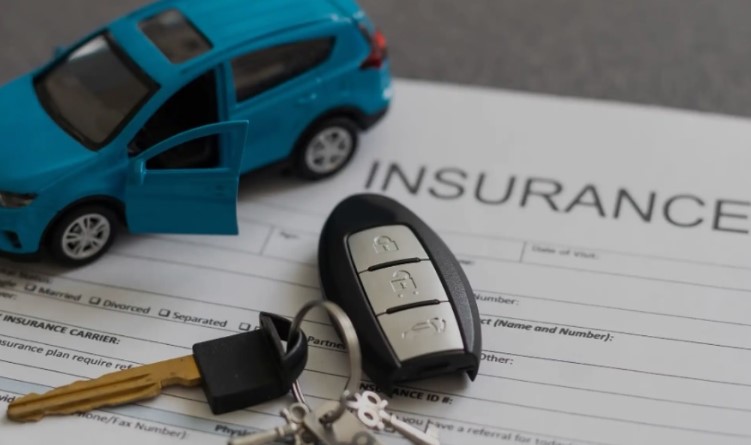The Ultimate Guide to Choosing the Best Car Insurance Policy
Introduction
Car insurance is essential for every driver, providing financial protection in case of accidents, theft, or damage to your vehicle. However, with numerous providers and policy options available, selecting the best car insurance can be overwhelming.
This guide will help you understand car insurance basics, explore different types of coverage, compare policy options, and find the best deal that fits your needs.
1. Understanding Car Insurance
What is Car Insurance?
Car insurance is a contract between you and an insurance company, where you pay a premium in exchange for financial protection against vehicle-related risks. The policy covers damages, liabilities, and other costs depending on the chosen coverage.
Why is Car Insurance Important?
Legal Requirement: Most countries and states require drivers to have at least liability insurance.
Financial Protection: It helps cover repair costs, medical expenses, and third-party damages.
Peace of Mind: Knowing you’re protected in case of an accident reduces stress while driving.
2. Types of Car Insurance Coverage
1. Liability Insurance
Covers bodily injury and property damage you cause to others.
Required by law in most places.
Does not cover damages to your own car.
2. Collision Insurance
Pays for repairs to your vehicle if you hit another car or object.
Ideal for new or expensive vehicles.
3. Comprehensive Insurance
Covers non-collision damages, including:
Theft
Vandalism
Natural disasters (floods, storms, earthquakes)
Fire
Recommended if you live in high-risk areas.
4. Personal Injury Protection (PIP) / Medical Payments (MedPay)
Covers medical expenses for you and your passengers.
Includes hospital bills, lost wages, and rehabilitation costs.
5. Uninsured/Underinsured Motorist Coverage (UM/UIM)
Protects you if another driver doesn’t have insurance or has insufficient coverage.
Helps with medical expenses and damages.
6. Gap Insurance
Pays the difference between your car’s actual value and the remaining loan balance if your vehicle is totaled.
Useful for new car owners with high loan amounts.
7. Rental Reimbursement Coverage
Pays for a rental car while your car is being repaired after an accident.
8. Roadside Assistance
Provides towing, battery jump-starts, flat tire changes, and emergency fuel delivery.
3. Factors That Affect Car Insurance Premiums
1. Age and Driving Experience
Young and inexperienced drivers pay higher premiums due to increased accident risks.
Older, experienced drivers often qualify for discounts.
2. Driving Record
Accidents, speeding tickets, and traffic violations lead to higher rates.
A clean driving history can earn discounts.
3. Vehicle Type
Luxury and sports cars cost more to insure due to higher repair costs.
Safety features and anti-theft devices may lower premiums.
4. Location
Urban areas have higher rates due to traffic congestion and theft risks.
Rural areas tend to have lower premiums.
5. Credit Score
A higher credit score can help you get lower rates.
Poor credit may lead to higher premiums.
6. Annual Mileage
Driving more miles per year increases accident risk, raising costs.
Low-mileage drivers may qualify for usage-based or pay-per-mile insurance.
7. Deductible Amount
A higher deductible (the amount you pay before insurance kicks in) lowers your premium.
A lower deductible increases premiums but reduces out-of-pocket costs in claims.
8. Insurance History
A history of lapses in coverage can lead to higher rates.
Continuous coverage shows responsibility and earns better prices.
4. How to Compare Car Insurance Policies
1. Get Multiple Quotes
Use online comparison tools or visit insurer websites.
Compare rates, coverage limits, and additional benefits.
2. Check for Discounts
Many insurance companies offer discounts, such as:
✅ Good Driver Discount – For maintaining a clean driving record.
✅ Multi-Car Discount – For insuring multiple cars under one policy.
✅ Bundle Discount – When you combine car and home insurance.
✅ Low Mileage Discount – If you drive fewer miles than average.
✅ Safety Features Discount – For cars with anti-lock brakes, airbags, or security systems.
3. Read Customer Reviews and Ratings
Check customer satisfaction, claims processing speed, and customer service quality.
Look at reviews on sites like Trustpilot, J.D. Power, and Better Business Bureau.
4. Assess Coverage Limits and Exclusions
Ensure the policy covers everything you need.
Watch out for hidden exclusions (e.g., natural disasters, rental car limits).
5. Consider Financial Strength of the Insurer
Check AM Best, Moody’s, or Standard & Poor’s ratings to ensure the company is financially stable.
5. Common Mistakes to Avoid When Buying Car Insurance
🚫 Choosing the Cheapest Policy Without Checking Coverage
Low-cost policies often provide minimal protection, leading to high out-of-pocket expenses in an accident.
🚫 Not Understanding Deductibles
A high deductible lowers premiums but requires more money upfront during a claim.
🚫 Ignoring Uninsured/Underinsured Motorist Coverage
1 in 8 drivers in the U.S. are uninsured. This coverage protects you from their negligence.
🚫 Failing to Update Your Policy
If you move, get married, or change cars, update your policy for accurate rates.
🚫 Forgetting About Discounts
Many drivers miss savings by not asking for eligible discounts.
6. When to Review and Update Your Car Insurance
🔄 Annually – Compare policies each year to see if you can get a better deal.
🔄 After Life Changes – Marriage, moving, job changes, or buying a new car.
🔄 After Accidents or Violations – Check if your rates increased and look for better options.
🔄 If You Add a New Driver – Teen drivers may need adjustments in coverage.
7. Final Tips for Choosing the Best Car Insurance Policy
✅ Choose the Right Coverage for Your Needs – Don’t underinsure or overpay for unnecessary extras.
✅ Compare Quotes from Multiple Insurers – Prices vary widely between companies.
✅ Look for Discounts – Bundling policies, good driving records, and safety features can lower costs.
✅ Check the Reputation of the Insurer – A reliable company ensures smooth claims processing.
✅ Review Your Policy Annually – Adjust based on life changes or better offers.
Conclusion
Choosing the best car insurance policy requires research, comparison, and understanding your coverage needs. By evaluating different policies, considering important factors like coverage types and costs, and avoiding common mistakes, you can secure a policy that offers financial protection and peace of mind.
Take your time, compare wisely, and make an informed decision to ensure you and your vehicle are protected on the road. 🚗💨



